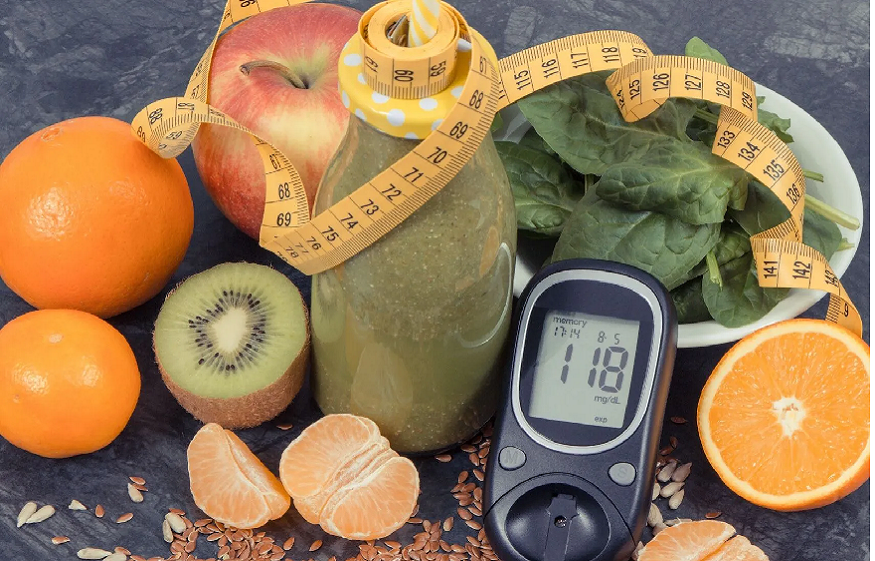5 Steps to Slash Your Diabetes Risk
Starting a change in your lifestyle could be a major step towards diabetes prevention; it is never too late. Think about these ideas.The most often occurring kind of the disease, type 2 diabetes, can be avoided with lifestyle changes. Preventing symptoms of type 1 diabetes is especially important if you now face a higher risk from obesity or excess weight, high cholesterol, or a family history of diabetes.
If you have been diagnosed with pre-diabetes or elevated blood sugar that falls short of the threshold for a diabetes diagnosis, lifestyle modifications can help to either avoid or postpone the start of the illness.Making a few lifestyle adjustments today could help you prevent future major health issues including heart damage and kidney and nerve problems related to diabetes. One never runs too late to start. In this article we are going to delve into steps to cut down diabetes risk as follows:
- One Should Shed Additional Weight
Reducing weight lowers the diabetic risk. After decreasing roughly 7% of their body weight with modifications in diet and exercise, individuals in one major study had virtually 60% less risk of acquiring diabetes.
To stop the development of their condition, those with pre-diabetes should drop at least 7% to 10% of their body weight. Greater benefits will follow from more weight loss.Based on your present body weight, decide on a target weight loss. Discuss acceptable short-term goals and expectations, including losing 1 to 2 pounds weekly, with your doctor.
- Exercise More Physically
Frequent physical exercise offers several advantages. Exercise will assist you in shedding pounds, changing your blood sugar levels and increasing your insulin sensitivity to assist control your blood sugar with normal range. Most adults have as their goals weight loss and maintenance of a healthy weight.
Resistance training is what I do. At least two to three times a week, resistance exercise boosts your strength, balance, and capacity to keep an active life. Resistance training covers calisthenics, yoga, and weightlifting.
Separating protracted periods of inactivity, including computer sitting, can help regulate blood sugar levels. Every thirty minutes, spend some time standing, walking around, or engaging in any modest exercise.
- Eat Well from Plants
Plants supply your food with vitamins, minerals, and carbs. Carbohydrates include sugars and starches, your body’s energy source, and fiber. Part of plant foods your body cannot break down or absorb, dietary fiber—also known as roughage or bulk—is not consumed.Foods high in fiber help to reduce diabetes risk and encourage weight loss. Eat a range of healthful, high-in-fiber foods including fruits from trees, tomatoes, peppers, leafy greens, broccoli, and cauliflower, among non-starchy veggies. One can also prepare legumes including lentils, chickpeas, and beans. Whole grains including quinoa, whole oats, whole-wheat pasta and bread, and whole-grain rice.
Fiber has advantages like slowing down sugar absorption and blood sugar levels decreasing, interfering with the cholesterol and dietary fat absorption, controlling other risk factors influencing cardiac condition including inflammation and blood pressure.
Helping you eat less since foods high in fiber are more satisfying and energizing.Steer clear of foods labeled as “bad carbohydrates,” heavy in sugar with little fiber or nutrients: white bread and pastries, pasta from white flour, fruit juices, and processed foods using sugar or high-fructose corn syrup.
- Consume Healthy Fats
High in calories, fatty meals ought to be consumed in moderation. Your diet should consist of a range of foods including unsaturated fats, commonly known as “good fats,” to help shed and control weight.Both monounsaturated and polyunsaturated fats as unsaturated fats help to maintain normal blood cholesterol levels and good heart and vascular conditions. Good sources of fats are olive, sunflower, safflower, cottonseed, canola, oils, almonds, peanuts, flaxseed and pumpkin seeds, among nuts and seeds.
You can also feed on fatty fish including sardines, tuna, cod, salmon and mackerel. Dairy goods and meats include saturated fats, the “bad fats.” These need to be a minor component of your diet. Lean chicken and pork as well as low-fat dairy products help you cut saturated fats.
Key Take-Away
Your dietary objective should be to drop weight and then keep a better weight going forward. Thus, good dietary choices must incorporate a plan you could keep as a lifetime habit. Over time, making wise choices reflecting some of your tastes for cuisine and customs could help you.Dividing your plate is one easy way to help you choose foods wisely and consume reasonable amounts.



